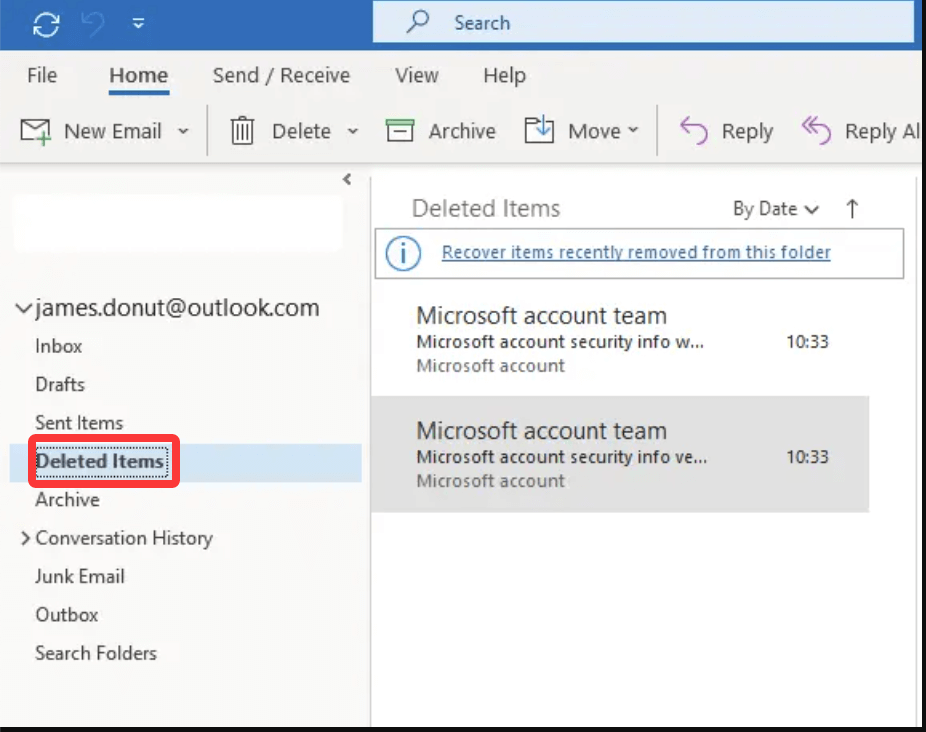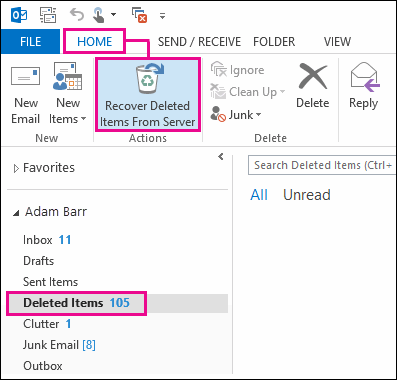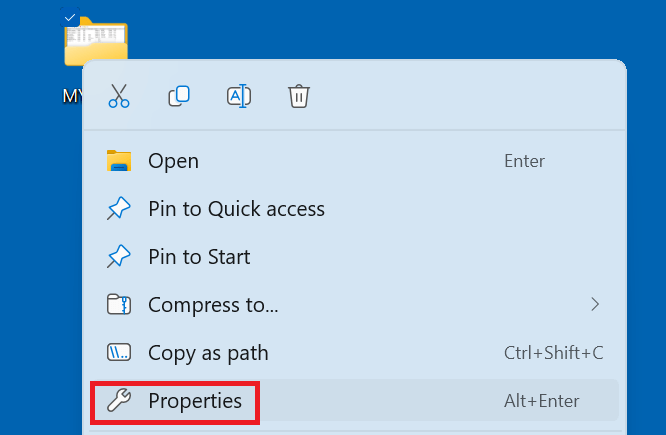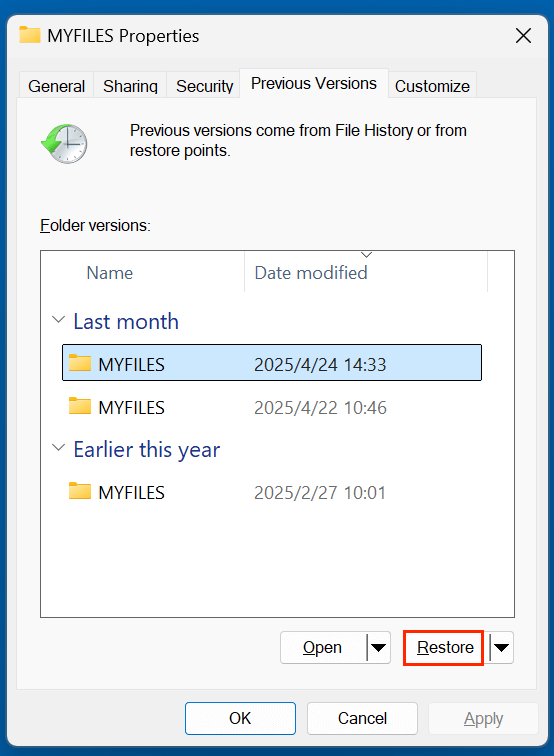Before we start: MSG file is always used by Microsoft Outlook and Exchange. Can recover deleted MSG file? Yes, data recovery software, such as Donemax Data Recovery, can easily and quickly recover permanently deleted MSG file and recover lost MSG file after reinstalling Windows OS or formatting hard drive.
PAGE CONTENT:
In today's fast-paced digital world, email communication remains critical for both individuals and businesses. With emails often containing essential information, losing an important email can cause major disruptions. This is where .MSG files come into play, offering a way to save individual emails externally. But what happens if these .MSG files are accidentally deleted or lost? This article explains everything about .MSG files and provides detailed solutions to recover them effectively.

What is a .MSG File?
A .MSG file is a file format used by Microsoft Outlook and Exchange to save a single email message, appointment, contact, task, or other Outlook item. This file format preserves the complete structure of the email, including:
- The message body (plain text, HTML, or rich text)
- Sender and recipient information
- Subject line
- Attachments
- Embedded images
- Metadata (dates, message ID, etc.)
The .MSG file is based on Microsoft's Compound File Binary Format (CFBF), the same underlying structure used by other Office documents like .DOC or .XLS files.
These files allow users to save an email outside the Outlook application, making it easy to store, transfer, or archive important emails.
Where are .MSG Files Commonly Used?
Though primarily associated with Outlook, .MSG files serve various practical purposes across industries:
1. Email Archiving:
Organizations often save critical emails as .MSG files for long-term storage, ensuring easy access without relying on Outlook alone.
2. Legal and Compliance Needs:
In legal cases or compliance audits, .MSG files serve as tamper-proof copies of communications that can be presented as evidence.
3. Email Migrations:
During server migrations or system upgrades, .MSG files help preserve individual emails that need to be moved or shared separately.
4. Sharing Specific Emails:
Users can save specific emails as .MSG files and share them as file attachments, keeping the formatting and attachments intact.
Difference Between .MSG and Other Email Formats
Understanding how .MSG files differ from other formats is essential:
| File Type | Description | Key Difference |
|---|---|---|
| .MSG | Individual email message saved by Outlook | Contains full metadata, attachments, and formatting |
| .PST | Personal Storage Table for Outlook data | Stores entire mailboxes including emails, contacts, calendar |
| .OST | Offline Storage Table for cached emails | Used for offline access to Exchange mailboxes |
| .EML | Email saved in plain text format (used by multiple clients) | Simpler structure, less metadata, more universal |
While .PST and .OST files store collections of emails, .MSG files focus on saving single emails, making them ideal for selective backup or sharing.
Common Causes of .MSG File Deletion or Loss
Losing .MSG files can happen unexpectedly due to various reasons, including:
1. Accidental Deletion:
The most common reason - users may unintentionally delete .MSG files from their computer or storage device.
2. Outlook Deletion:
Deleting an email in Outlook and saving it as a .MSG file can sometimes lead to confusion, resulting in both versions being lost.
3. Software or System Crash:
Unexpected application crashes or system failures during save operations can corrupt or delete .MSG files.
4. Malware or Virus Attacks:
Malicious software can delete or damage .MSG files stored on infected devices.
5. Storage Device Issues:
Hard drive failures, bad sectors, or formatting errors can cause stored .MSG files to disappear.
6. Corrupt Outlook Profiles:
If an Outlook profile becomes corrupted, emails and exported .MSG files may become inaccessible.
Best 4 Methods to Recover Deleted .MSG Files
Fortunately, deleted .MSG files can often be recovered if action is taken promptly. Here's a step-by-step guide covering all possible recovery methods:
Method 1. Recover Deleted MSG File from Recycle Bin (If Saved Locally)
If the .MSG files were saved on your desktop, documents folder, or other local drives, they might still be in the Recycle Bin:
- Double-click the Recycle Bin icon
- Search for the deleted .MSG files by name
- Right-click the file and select Restore
![Recover Deleted .msg File]()
This will return the file to its original location.
Method 2. Recover MSG File from Outlook's Deleted Items Folder
If the email associated with the .MSG file is still in Outlook:
- Open Outlook
- Go to the Deleted Items folder
![Recover Deleted .msg File]()
- Locate the email and drag it back to the desired folder
For Exchange accounts or Office 365 users:
- Go to Deleted Items
- Click on Recover Deleted Items from Server
![Recover Deleted .msg File]()
- Select emails to restore
💡 Note: If you manually deleted a .MSG file saved outside Outlook, this method won’t work; proceed to other options.
Method 3. Restore Lost MSG File from Backup
If you've enabled backup solutions, your .MSG files might be retrievable:
Using File History (Windows 10/11):
- Go to the folder where the .MSG files were stored
- Right-click the folder > Properties > Previous Versions
![Recover Deleted .msg File]()
- Browse available backups and restore files
![Recover Deleted .msg File]()
Third-Party Backup Tools:
If you use external backup software (Acronis, Donemax Disk Clone, etc.), check your backup vaults for the lost .MSG files.
Method 4. Recover .MSG Files Using Data Recovery Software
If your .MSG files are permanently deleted, bypassing the Recycle Bin, or were lost due to formatting, system crashes, or accidental partition deletion, specialized data recovery software becomes the most reliable solution. These tools can perform deep scans of your storage device to locate and restore deleted or lost files, including .MSG files, even if the file system appears empty or corrupted.
Why Use Data Recovery Software for .MSG Files?
- Even after deletion, file data often remains on storage devices until overwritten.
- Recovery software can access low-level disk structures to reconstruct files.
- Supports recovery from hard drives, SSDs, USB drives, external disks, and memory cards.
- Can recover files lost due to formatting, partition loss, virus attacks, or corruption.
- Provides preview functionality to verify recoverable .MSG files before restoration.
Recommended Tools:
- Donemax Data Recovery
- Do Your Data Recovery
- Magoshare Data Recovery
Steps to Recover .MSG Files:
Step 1. Download and install the recovery software - such as Donemax Data Recovery (avoid installing on the same drive where .MSG files were stored to prevent overwriting).
Step 2. Launch Donemax Data Recovery and select the affected drive.
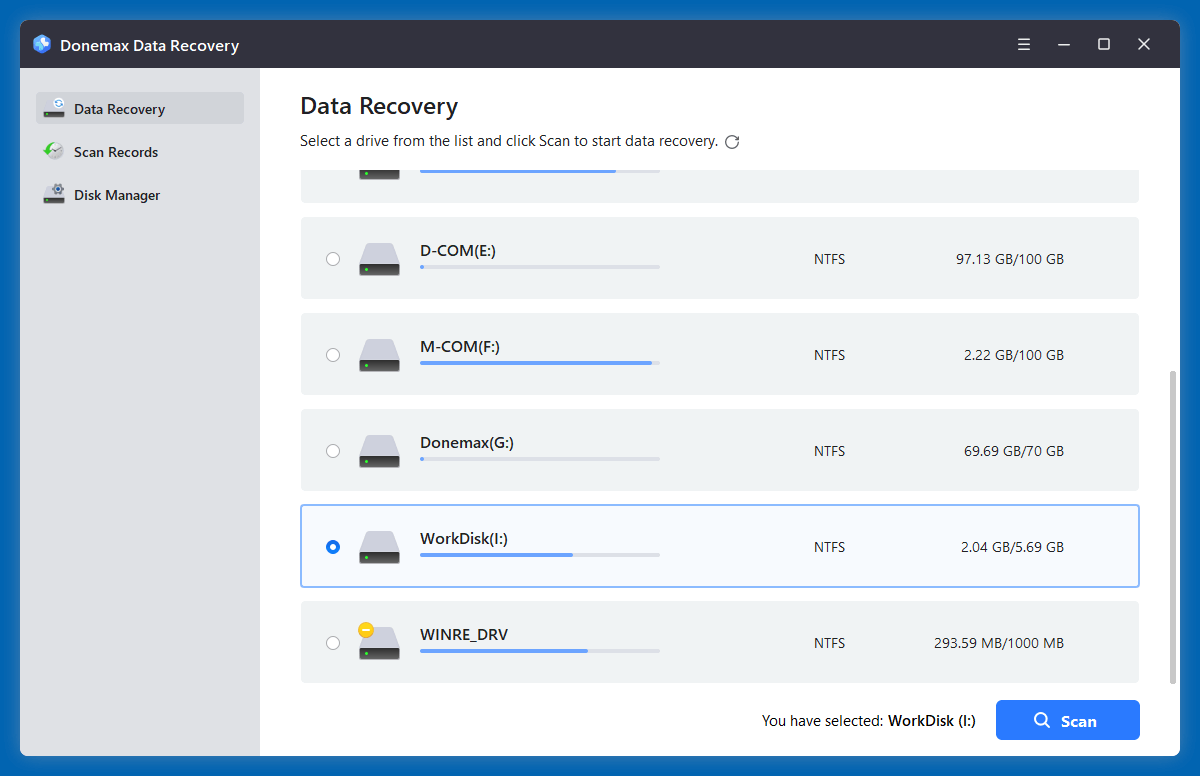
Step 3. Click on Scan button. Initiate a Quick Scan followed by a Deep Scan.
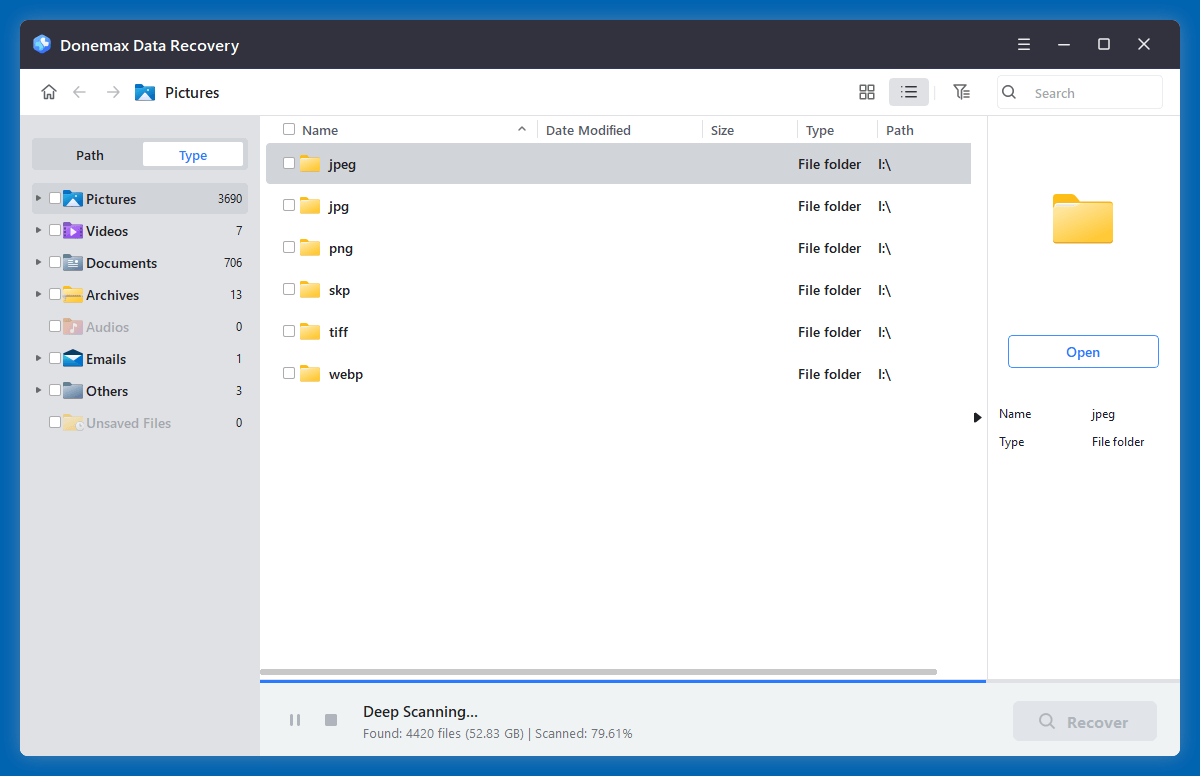
Step 4. Filter results by file type or search for .MSG. Preview recoverable files. Select the desired .MSG files and restore them to a different drive.
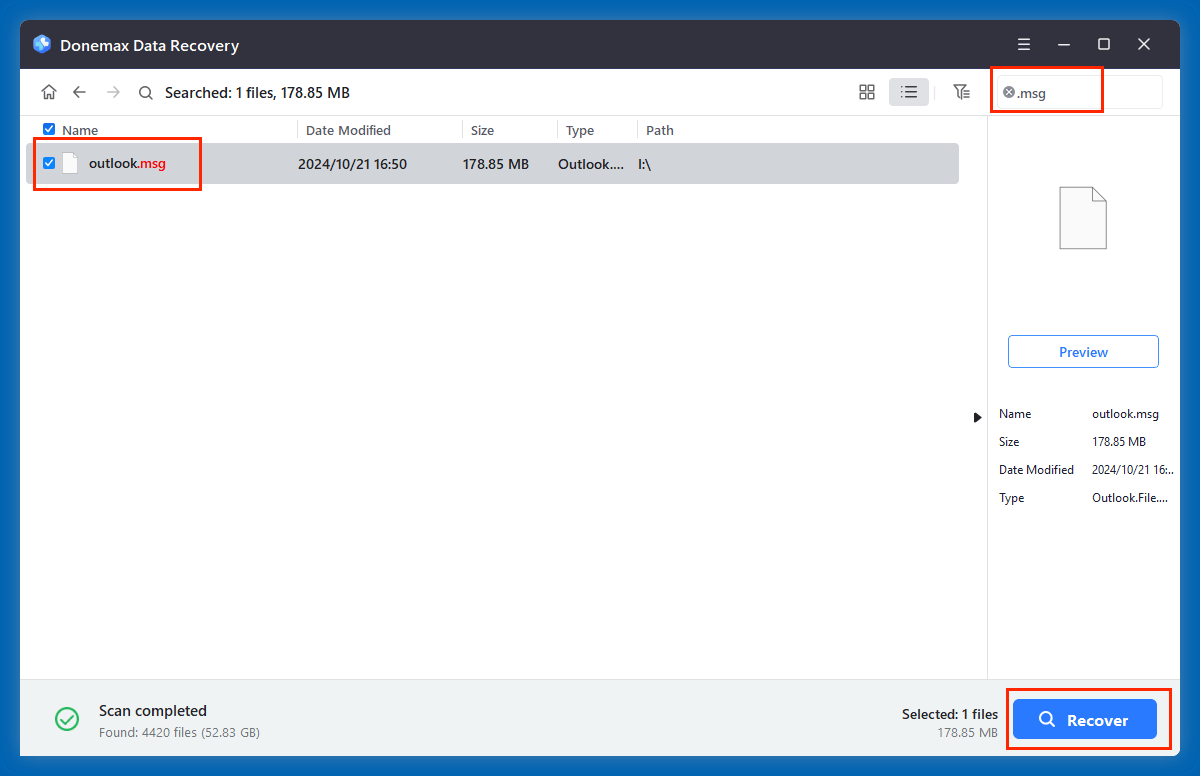
💡 Note: Prompt recovery increases success chances - minimize device use after file deletion to avoid data overwriting.
⭐ Additional Tips for Effective Recovery
- If your drive shows physical signs of failure (clicking noises, overheating), stop using it immediately and consult a professional recovery service.
- Regularly update your data recovery software to ensure compatibility with newer file systems or storage devices.
- For encrypted drives, recovery success depends on whether decryption credentials are available.
❎ Limitations of Data Recovery Software
While powerful, software-based recovery has limitations:
- Overwritten files are typically unrecoverable.
- Severely damaged or physically failing drives may require professional lab recovery.
- Results vary depending on storage health and how long ago files were deleted.
If standard recovery attempts fail, data recovery labs equipped with advanced tools can attempt more complex recovery processes, albeit at higher costs.
🔹 How to Recover Corrupted .MSG Files?
Sometimes .MSG files are present but won't open, indicating corruption. Common reasons include:
- Incomplete file saving due to system crashes
- Virus infection
- Faulty storage sectors
Solutions for Corrupted .MSG Files
1. Open with a Text Editor:
For partially corrupted files, open the .MSG with Notepad or WordPad to retrieve plain text portions.
2. Use Outlook's Repair Tools:
- Run ScanPST.exe, the Inbox Repair Tool
- Although designed for .PST files, it can sometimes fix related issues
3. Third-Party .MSG Repair Utilities:
Tools like Stellar Repair for Outlook or Kernel for Outlook PST Repair may assist in repairing corrupted .MSG files, especially if linked to PST corruption.
Tips to Prevent Future .MSG File Loss
Avoiding data loss is always better than recovery. Here are practical tips:
- Regularly back up important .MSG files to external drives or cloud storage
- Enable Windows File History for automatic backups
- Maintain an organized email archiving system
- Protect your device with updated antivirus software
- Handle storage devices safely to prevent hardware damage
- Keep Outlook and Windows updated to prevent software conflicts
Conclusion
.MSG files play a vital role in preserving individual emails, especially for business, legal, and personal needs. While accidental deletion or corruption of .MSG files can disrupt workflows, multiple reliable recovery methods exist - from checking the Recycle Bin to using specialized recovery tools.
By understanding what .MSG files are, their purpose, and implementing proper backup strategies, you can safeguard your important emails against future loss. If you experience file loss, act quickly and use trusted recovery tools to maximize the chances of successful .MSG file recovery.


Donemax Data Recovery
One of the best data recovery programs to recover deleted, formatted or lost data from PC, Mac, HDD, SSD, USB drive, SD card, camera, RAID, Sever or other storage devices.
Related Articles
- May 22, 2025How to Recover Deleted 7-ZIP File (such as .7z file)?
- Jun 04, 2025How to Recover Deleted and Lost IDML Files?
- May 28, 2025Recover ANI File: Complete Guide to Restore Animated Cursor Files
- Oct 31, 2023Recover Data from External Hard Drive with Best Data Recovery Software
- Oct 27, 2025How to Recover Lost Data After Installing Windows 11 25H2?
- Jun 11, 20252025 Three Method to Recover Quick Formatted Hard Drive

Christina
Christina is the senior editor of Donemax software who has worked in the company for 4+ years. She mainly writes the guides and solutions about data erasure, data transferring, data recovery and disk cloning to help users get the most out of their Windows and Mac. She likes to travel, enjoy country music and play games in her spare time.

Gerhard Chou
In order to effectively solve the problems for our customers, every article and troubleshooting solution published on our website has been strictly tested and practiced. Our editors love researching and using computers and testing software, and are willing to help computer users with their problems

